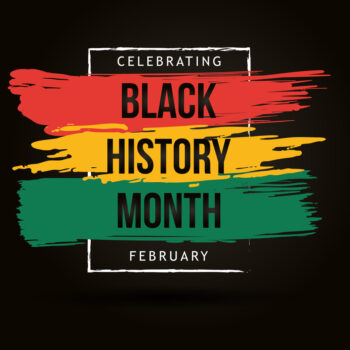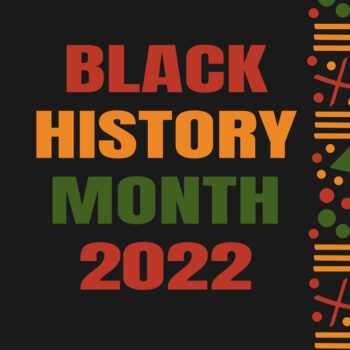By: Tanya Kramer
In honor of Black History Month, let’s honor John Robert Lewis for the life he lived and the legacy that he left.
John Lewis once said, “I have been in some kind of fight my entire life – for freedom, equality, basic human rights – for nearly my entire life.”
To walk this journey, here is a timeline of John Lewis’s life which reflects the hard work and commitment he had toward these principles.
- Born to Willie Mae (n’ee Carter) and Eddie Lewis in 1940. He was the 3rd child of 10 children.
- He was born and raised in a rural area of Alabama where his parents were sharecroppers.
- As a child, he aspired to be a preacher. He also loved to read saying “I love books”.
- Age 6 – He had only seen 2 white people in his life.
- Age 11 – He joined his uncle on a trip to New York where he first realized how segregated the South was in comparison to the North.
- Age 15 – He preached his first public sermon and this is when he first heard Dr. Martin Luther King preach on the radio (1955).
- Age 16 – He tried to get a library card and was told this was “only for white people and not for coloureds”.
- Age 17 – He met Rosa Parks.
- Age 18 – He met Dr. Martin Luther King who referred to him as “The Boy from Troy”.
- Age 18 – He attended the American Baptist Theological Seminary in Nashville, Tennessee.
- Ages 18 to 21 – He helped organize sit-ins at lunch counters in Nashville based on the Gandhian Philosophy of Nonviolence. His activism resulted in being jailed many times, the first time happening on February 27, 1960. He was quoted as saying he was involved in “good trouble, necessary trouble”.
- Around Age 21 – He was one of the 13 original Freedom Riders. (1961) These Freedom Riders (seven black people and six white people) road buses from Washington DC to New Oreleans challenging the Southern States segregation policies.
- Age 21 – He was the first person of the Freedom Riders to be assaulted. He was attacked by two white men who injured him in the face and kicked him in the ribs. In Birmingham the Freedom Riders were beat with baseball bats, chains, lead pipes, and stones. He was hit in the head with a wooden crate and left unconscious at the Greyhound Bus Terminal in Montgomery. He later stated “It was very violent. I thought I was going to die”.
- Age 21 – As a result of being a Freedom Rider, he spent 40 days in jail.
- Age 21 – He graduated from college as an ordained Baptist Minister.
- Between Age 20 to 26 – He was arrested 40 times for his acts of nonviolence.
- Around Age 23- He became chair of the Student Nonviolent Coordinating Committee (SNCC) which he helped create. (1963)
- Around Age 23 – He helped organize as one of the “Big Six” leaders for the “March on Washington that was estimated to be over 200,000 people. He was the 4th and youngest speaker at the march which ended with Dr. Martin Luther King’s “I Have a Dream” speech. (Summer of 1963)
- Around Age 24 – He helped the SNCC start “Freedom Schools” and one of the key initiatives was to help register black voters. (1964)
- Around Age 25 – He led the first of three marches from Selma to Montgomery across the Edmund Pettus Bridge now remembered as “Bloody Sunday”. (1965) He was beat with a nightstick resulting in a fractured skull. Over 50 people were hospitalized including John Lewis. This event increased awareness across the county resulting in the Voting Rights Act signed into law by President Lyndon B. Johnson on August 6, 1965.
- Age 27 – He graduated with a Bachelors in Religion and Philosophy from Fisk University. (1967)
- Age 28 – He married Lillian Miles who was a librarian, teacher, and PeaceCorp member who could “quote Dr. King’s speeches verbatum”.
- Age 30 – He became the Director of the Voter Education Project which helped register millions of minority voters.
- Age 36 – His wife Lillian Miles and him adopted a 2 month old child they named Miles Lewis. He reportedly fell in love with Miles the moment he saw him.
- Age 37 – President Jimmy Carter put him in charge of ACTION, the umbrella federal volunteer agency that included the Peace Corps and Volunteers of America (VISTA). (1977)
- Age 41 – He took elecive office as an Atlanta City Counsilman.
- Age 46 to 80 – He became a member of the House of Representatives for the 5th District in the State of Georgia where he was re-elected 18 times. (1986) He served in the House of Representatives until his death. During this time he served on many committees and over 40 caucuses including the House Budget Committee, House Ways and Means Committee, the Subcommittee on Health, he was the Chief Deputy Democratic Whip (meaning the number two Democratic leadership position in the House), the Democratic Steering Committee, the Congressional Black Caucus, the Congressional Committee to Support Writers and Journalists, and the Co-Chair of the Faith and Politics institute.
- Age 48 – He introduced a bill to create a National Museum for African American History and Culture. It took many years, but the bill was finally signed in 2003 and officially opened on September 25, 2016 adjacent to the Washington Mall.
- Age 72 – His wife of over 4 decades, Lillian Miles, died on December 31, 2012.
- Age 73 – He was arrested for the 45th time in his life when protesting in support of comprehensive immigration reform on October 8, 2013.
- Age 79 – He was diagnosed with Stage 4 Pancreatic Cancer in December of 2019.
- Age 80 – He died in July of 2020. He was the first African American to lie in state in the rotunda of the US Capitol.
From this timeline, it is clear how John Lewis was relentless in his desire to have freedom for everyone. He sacrificed his own freedom in the name of justice, equality, and nonviolence. As was stated at the time of his passing by a peer in the House of Repesentatives, John Lewis was the “Conscious of the House”.
In honor of this life long commitment to the cause, John Lewis was decorated with over 20 awards including:
- 1975 – Martin Luther King Jr. Nonviolence Peace Prize
- 2001 – John F. Kennedy Profile in Courage Award
- 2002 – Nationa Advancement of Colored People (NAACP) Spingam Medal
- 2001 – Presidential Medal of Freedom from President Barack Obama
- Numerous book awards including the 2016 National Book Award and the 2017 Coretta Scott King Boook Award
- Numerous honorary degrees from over 50 colleges and universities
- The National Education Association Martin Luther King Jr. Memorial Award
- John Lewis’s name is bestowed on many schools, roads, bridges, and a US Navy Ship called the “USNS John Lewis”
- Numerous statues have been commissioned in memory of John Lewis
John Lewis left many memorable quotes or statements. I leave you with this one which he posted on social media in 2018: “Do not get lost in a sea of despair. Be hopeful, be optimistic. Our struggle is not the struggle of a day, a week, a month, or a year, it is the struggle of a lifetime. Never, ever be afraid to make some noise and get in good truble, necessary trouble.”
If you want to learn more about John Lewis, then follow up with these resources:
- Book by John Lewis – Walking with the Wind – A Memior of the Movement –
- Graphic Novel series by John Lewis – March Trilogy–
- 2020 Documentary – John Lewis: Good Trouble –
Wikipedia – John Lewis


